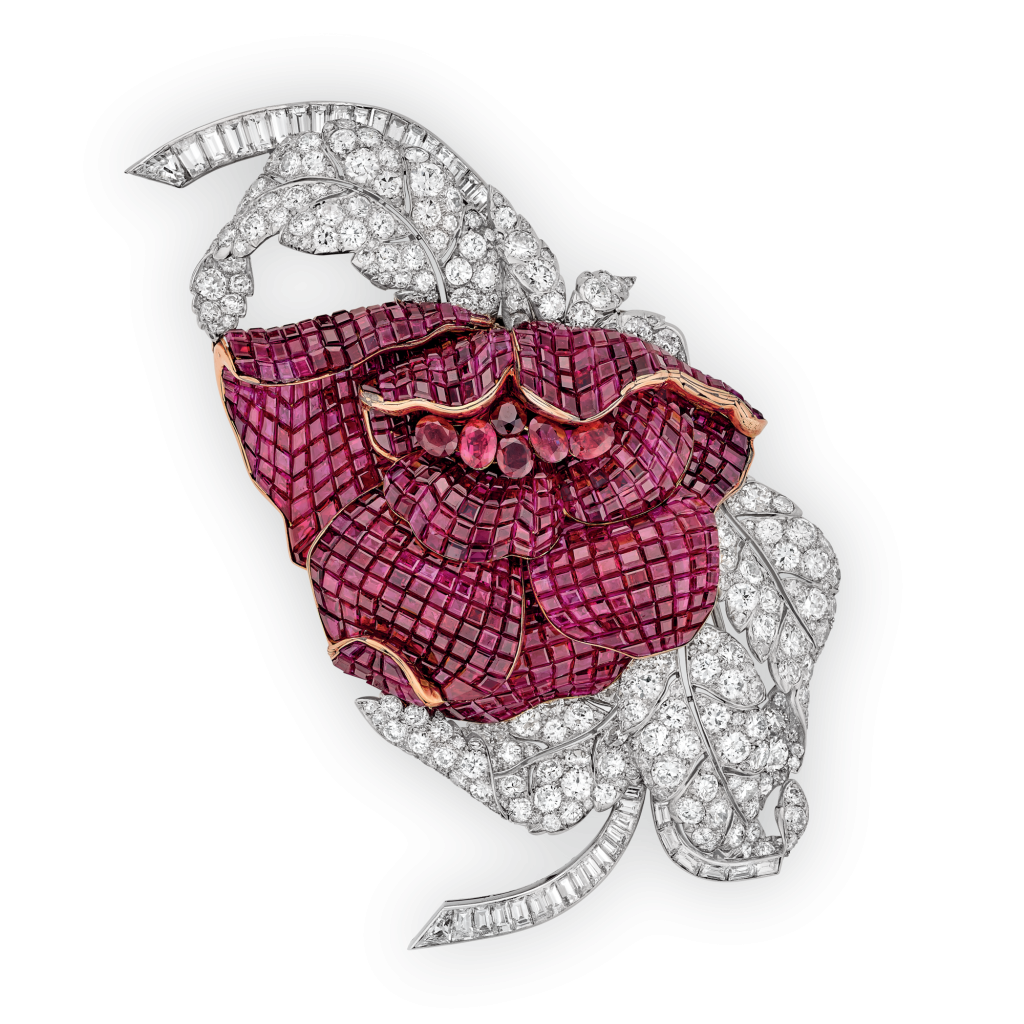
Peony clip


Creation details
- Creation year 1937
- Usage Clip
- Dimensions 105 × 60 mm
Together with the Chrysanthemum clip, the Peony epitomizes the creative and above all technical emulation that lay behind the jewelry feats of the 1930s.
With this piece, Van Cleef & Arpels met the major challenge posed by the evolutions of “twentieth-century jewelry” whereby the “mount is no more than an invisible canvas for embroidering with gems.”1Henri Clouzot, Les Arts précieux à l’Exposition coloniale (Paris: Imprimerie de Frazier-Soye, 1931), 12. A half-open peony flower rests on a group of calibrated diamond branches and slightly twisting platinum foliage set with brilliants. The heart of the flower is composed of six oval-cut rubies that accentuate the flower’s depth and volume. Petals edged with yellow gold unfurl around it, forming large monochrome areas set with rubies. These sweeping surfaces set with precious stones were possible thanks to the perfection, in 1933, of a new method of setting gems: the mystery set.
The Exposition internationale of 1937
The Peony clip is a virtuoso example of this innovation “devoted to refinement and color,”[P. H.], “Informations,” Le Figaro (August 6, 1937): 2. and was the obvious choice to represent Van Cleef & Arpels at the Exposition internationale des arts et des techniques appliqués à la vie moderne in Paris, in 1937. It was presented in the center of the display case on the Maison’s stand, together with the Chrysanthemum clip, made the same year.

A transformable jewel
According to one of the preparatory gouachés, this piece was initially designed around four peonies, and could be transformed into three clips. This idea for a transformable piece of jewelry, as well as the naturalistic treatment of the gouaché, reveal the obvious reference to cascading brooches of the past. In this respect, the Peony clip is entirely in keeping with the legacy of nineteenth-century jewelry.

A piece acquired by the Egyptian royal family
As a result of the exposure and prestige of its first presentation at the 1937 Exposition universelle, one of the peonies of this double clip was acquired by the Egyptian royal family in 1946. In February 1950, the clip was sent back to the Maison’s workshops for repair at the request of Princess Fawzia. That same year, it adorned her coat at a performance at the Royal Opera House in Cairo.
Peony clip

This piece is an example of one of the greatest technical innovations in the history of jewelry, and it joined the Maison’s Patrimonial Collection in 1985. A few years later, in 1992, it was brought to the public’s notice in the first retrospective exhibition dedicated to Van Cleef & Arpels, at the Palais Galliera in Paris.
To go deeper



